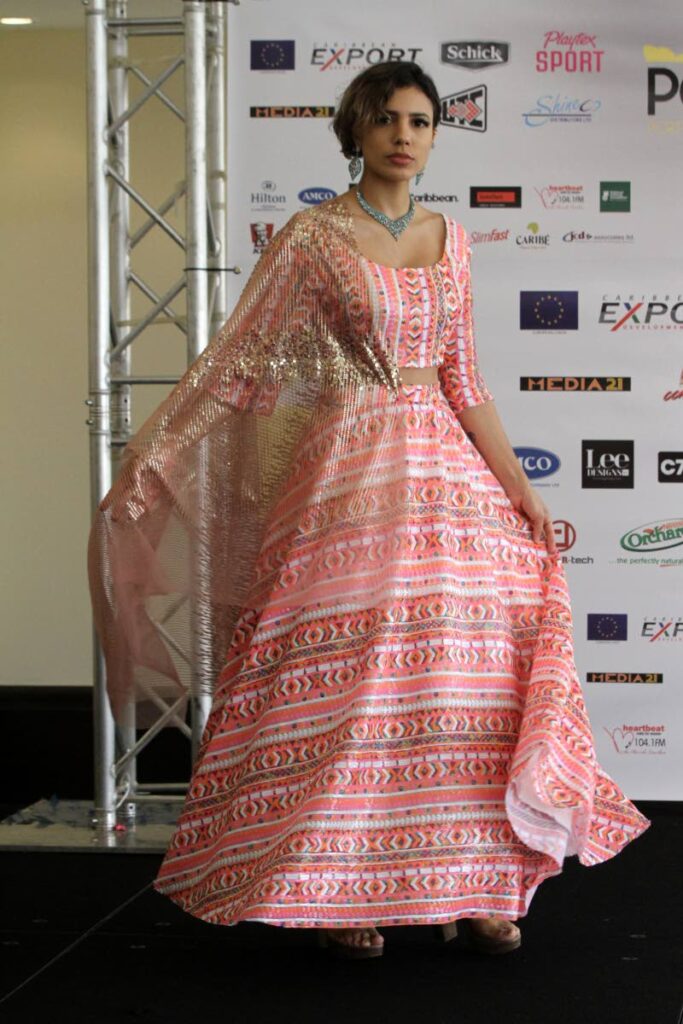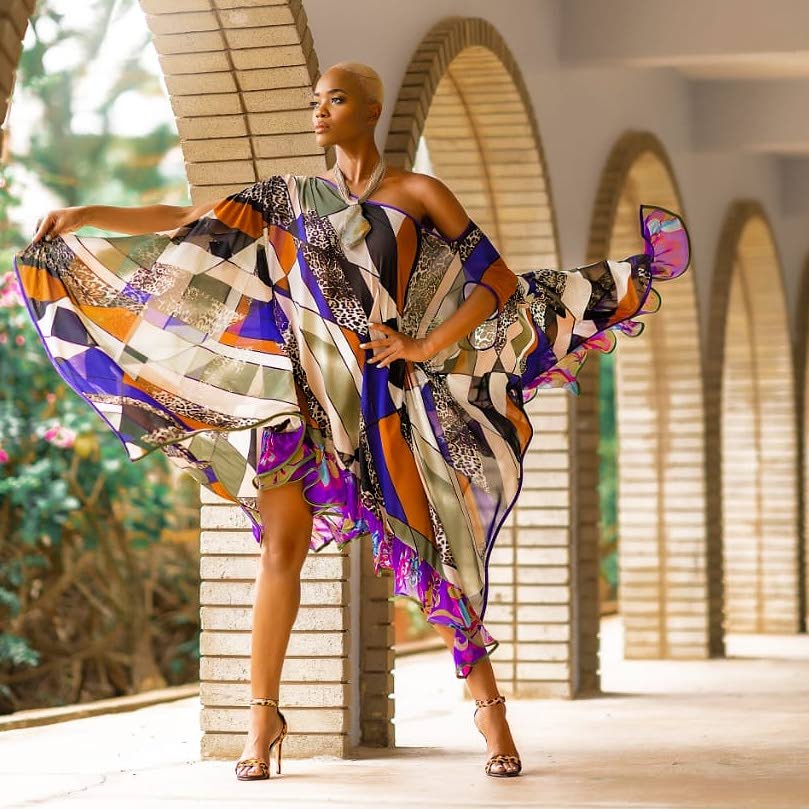TT envoy urges local designers to tap into China's fashion market

Trinidad and Tobago's Ambassador to China Analisa Low called on local fashion designers to contact its embassy in Beijing to discuss the possibilities that are available in China’s industry.
She made the call after highlighting the opportunities available during FashionTT’s Virtual Trade Mission and Expo.
The event was held virtually from 9 am to 5 pm on March 25 and featured an address by Minister of Trade and Industry Paula Gopee-Scoon as well as panel discussions with local fashion industry experts such as Prof Andrew Ramroop, Richard Young and Dr Auliana Poon.
During her address, Low said it was her pleasure to speak at the inaugural event and that it certainly was a win for the fashion industry in the country.
“As the first major global economy to return to substantial economic growth following a record contraction in 2020, China’s fashion industry has likewise rebounded to pre-pandemic levels.

“Retail malls have long re-opened in cities from Beijing to Wuhan and with global travel at a standstill, homebound luxury shoppers have been spending more than ever.”
She added that much of this activity has taken place online, much to the benefit of major e-commerce platforms like Chinese multinational technology company Alibaba.
She said before the pandemic China had already outstripped the US to become the world’s largest fashion market reaching US $121 billion annual sales in 2019.
“While China’s economic buoyancy in the face of the pandemic has offered a much-needed lifeline to foreign luxury brands, domestic brands have also made headway as consumers look increasingly inward,” Low said.
She said competition in the market is fierce with no shortage of choices for Chinese consumers. Foreign brands tailor their market strategies to the Chinese market.
“Which are often categorised by higher incomes in larger cities like Beijing and Shanghai to small cities with lower incomes, to quickly identify unique value propositions that will resonate with Chinese consumers,” she said.
Because of the pandemic Chinese consumers were choosing to buy more foreign goods online which resulted in booming sales and a much higher demand for imported goods last year.
In 2021, China’s e-commerce market was estimated to be larger than the US, UK, Japan, Germany and France combined. The country’s e-commerce sales was 52 per cent total retail service, making it the first country in the world to have more online sales than traditional retail sales, she added.

Rapid urbanisation, the increasing spending power of Chinese consumers and expanding markets for luxury and streetwear contributed to increasing demand for “well-made, creative and unique pieces from various fashion labels,” she said.
Low said TT’s fashion industry exhibited tremendous potential.
“While the current scale, production limitations and saturation of foreign competitors worldwide, present numerous challenges to our fashion industry, the diversity and boldness of the Caribbean palette and aesthetic provide a natural competitive advantage on which the industry can successfully capitalise, in order to maximise potential and strengths in a highly-competitive and dynamic industry,” she said.
Economic recovery in the post-pandemic world requires strategy, innovation and reflection, she said.
Research was showing particularly luxury brands recognise the shift in consumer demands and has started to reactivate product categories that were once dormant like resort wear also known as vacation fashion,
She said this demand was being driven by the evolution of the post-pandemic tourism industry.

China has one of the largest tourism industries in the world which offers a perfect opportunity for TT’s fashion stakeholders to “grow and for us to carve out a niche market of resort wear to satisfy the globalised generation of consumers who travel frequently,” she said.
Because of the pandemic, Low said, the tourism industry had undergone a major shift to accommodate current travel restrictions but also to capture the demands of travellers seeking a whole range of vacation experiences, she said.
She said from the profiles of TT’s designers and the display at the virtual mission and expo, Low said the sophistication and diversity of the pieces that can be classified as resort wear can target diverse range of vacation experiences from trendy beachwear to evening elegance.
“Sophisticated Chinese consumers are consistently displaying an appetite for newness and individuality meaning that niche and emerging brands very much like those seen in TT are on the rise across China,” she said.
Low said the lifting of travel restrictions and the advent of staycations, the rise in domestic travel and the development of the stay-at-home economy, market intelligence shows that resort wear has immense potential in generating significant returns in 2022,” she said.
She said the market had to be strategic about its entry into the Chinese market and highlighted the city of Sanya, on the southern end of China’s Hainan island. This was positioned to become a “global tourism and shopping destination in 2022,” Low said.

“In closing I wish to invite various fashion stakeholders from TT to get in touch with us at the embassy in Beijing and we would be more than willing to facilitate discussions on how to approach and explore different opportunities in China in the fashion industry,” she said.
Gopee-Scoon in addressing the virtual audience said the first Virtual Fashion Tradeshow and Exhibition was undertaken by the Trinidad and Tobago Fashion Company Limited (FashionTT) in partnership with exportTT, both of which fall under the Ministry of Trade and Industry.
She said the initiative showcased 11 of TT’s export-ready designers enrolled in FashionTT’s Global Value Chain Programme (GVC). The designers included The 1ndividual Aesthetic, The Cloth, Meiling, Charu Lochan Dass, Heather Jones International, J Angelique, Claudia Pegus, The Hideout Clothing, Genesis Swimwear, Neha Karina and Ecliff Elie.
She said the GVC is an integral component of the Fashion Value Chain Investment Programme (VCIP) and was designed to support participants “in strategically penetrating regional and international markets for the purpose of boosting exports and revenues.”
Gopee-Scoon said each GVC cohort will have the opportunity to participate in trade missions over a three-year period with the backing of the Government.
“TT’s National Development Strategy (NDS) 2016-2030, also known as Vision 2030 has identified the creative industries, of which fashion is a key subsector, as an economic sector that can provide opportunities for expansion and achieve global competitiveness. We are encouraged by the performance of the sector. During the fiscal period 2016 to 2020, the garment industry of TT generated exports of over $97 million (US$14 million),” Gopee-Scoon said.
She said TT designers were prepared to transition from small-scale export to larger opportunities selling to buyers’ boutiques, agents and large online retailers.
She added that FashionTT worked with designers over the past six years to ensure that their business operations, procedures and processes were globally competitive and the 11 designers selected for the programme were handpicked by an international expert panel based on the capability and capacity to compete in the international fashion industry.
“Interestingly, seventy-five per cent of the top tier designers in this programme have female-owned and operated businesses,” Gopee-Scoon said.

Comments
"TT envoy urges local designers to tap into China’s fashion market"